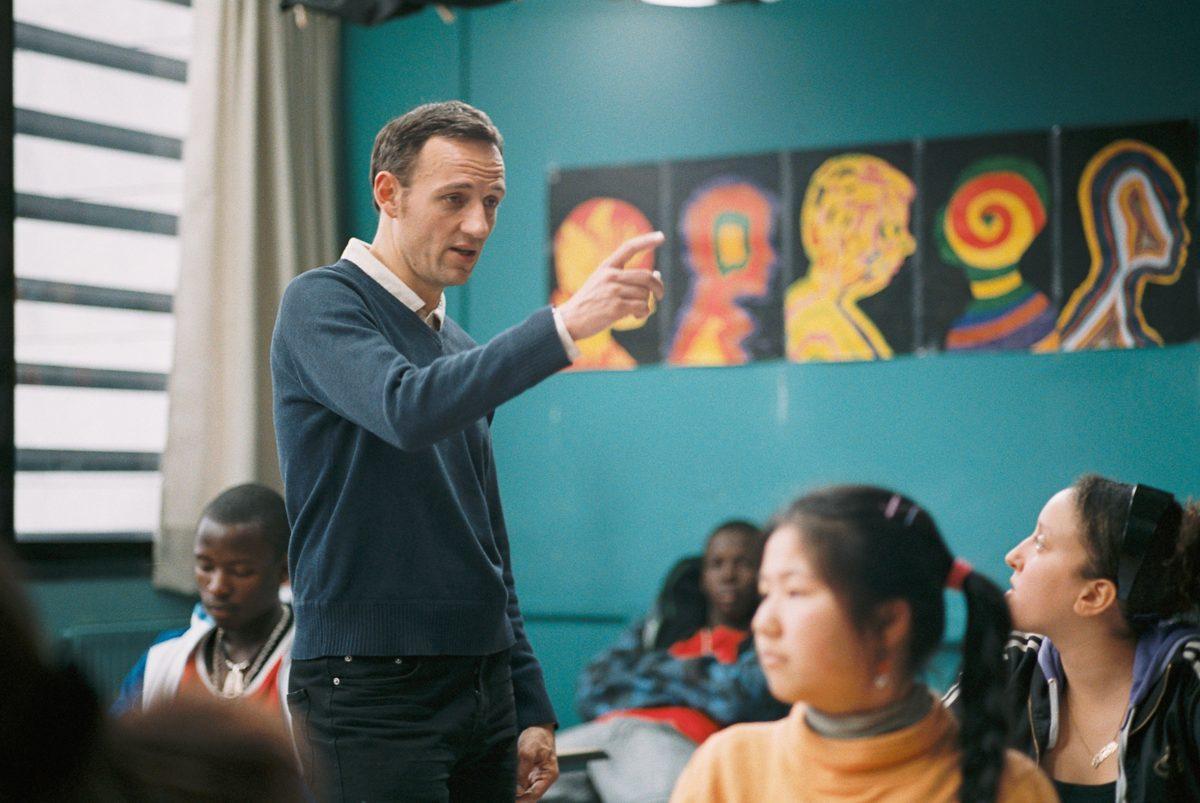
Courtesy Sony Pictures Classics© 2009
Tensions run high in this indepent French film that won the Palm d'Ors in the Cannes Film Festival.
4/5 stars
Remember the early years of high school? On the outside, it was all about challenging authority but was inwardly confusing since emotions often changed on a whim. French film The Class will make the viewer remember it all, and see themselves in the featured students.
The Class — or in its translated French title Between the walls — is based on a book that Francois Begaudeau wrote about his experiences as a teacher, published in 2006. In May 2008, the film won the prestigious Palme d’Or prize at the Cannes Film Festival. The film was also France’s entry in the Academy Awards category of Best Foreign Language Film.
It’s a new year at the College Francoise Dolto, where Francois Marin — played by Francois Begaudeau himself — has been teaching French for the past four years. The College Dolto is located in Paris’ 20th district, on the eastern outskirts of the city. What is notable about the 20th district is that it has a large immigrant population.
Marin teaches a junior-high level class comprised of students whose ages range from 13 to 15, with a range of personalities from docile to volatile. Some of the students he had taught in the previous year, and some are new to the level and to him.
Within the first few minutes of the movie, Marin goes through the usual routine of establishing order and introducing one another. In this vignette, it becomes evident of who among the classmates will mark themselves out from the others. Seatmates Khoumba and Esmeralda immediately distinguish themselves when they begin arguing with Marin about what exactly constitutes an hour of classroom learning.
The school’s students come from a wide range of nationalities, and this is reflected in Marin’s class. Students and/or their families hail from such places as China, Africa and the Caribbean. The conflict between the students’ ethnic backgrounds and traditional Franco- and Eurocentric viewpoints lead to some moments of disconnect.
Within the first ten minutes, Marin asks the class what words they do not understand and sets out to remedy this problem by creating sentences to show the meanings through context clues. With one word, Marin decides to use the name “Bill‚” as a subject, which Khoumba and Esmeralda question and then protest outright. Marin allows them to choose a name to replace it, and after swift consultation, the two pick Aissata and Fatou and finally settle on Aissata. This little scene illustrates the fact that the girls, as representing the entire class, could not relate to this theoretical “Bill” character, and so had to change it to something more in line with their respective cultures as to absorb the information better.
Hints of class warfare also burst to the surface, after simmering just below. This is nowhere more apparent than a staffroom scene, where a fellow instructor barges into the staffroom, proclaiming that he cannot teach the students and that they can wallow in their own excrement for all he cares. The other professors listen sympathetically, more than likely knowing exactly those thoughts. At another point, Khoumba protests a verb conjugation, claiming it to be bourgeois‚ making it clear that she does not align herself with such thinking.
A major subplot of the story concerns Souleymane, a troubled Mali student. Souleymane is insubordinate and ill-prepared for class, and yet is viewed an irreverent hero among his classmates. He continues to coast on his indifference until an ill-thought term uttered by Marin provokes a reaction from Souleymane that has dire consequences.
Through it all, the viewer is always reminded that they are watching teenagers. For a class exercise, Marin instructs his students to write about themselves, much like Anne Frank in her diary, and later asks them to discuss their ideas with the class. Wei, the shy Chinese student, speaks about his view that modern young people have no shame. When he finishes, attention is turned to Louise, who blushes while explaining that she believes her ears to be too large. The veering from the articulate reasoning to the aesthetically superficial reminds the audience that while the students may have reasonable ideas, they are still very much teenagers.
The film stays true to its documentary approach. Nearly all of the students use their real names, as does their teacher. The school itself actually exists, and the shaky, hand-held camera reinforces the fly-on-the-wall viewpoint. Though a screenplay was scripted, it is difficult to tell since the all of interactions flow so naturally, especially the ones with overlapping chatter.
The Class is a poignant film about the interplay between teachers and adolescents. It shows the undercurrent of class and racism in modern-day Paris. The film showcases the immigrant side of Paris, one not often seen in films popular in the United States. It draws the viewer into its world completely, until releasing them at the end to reflect on their own adolescent experiences.